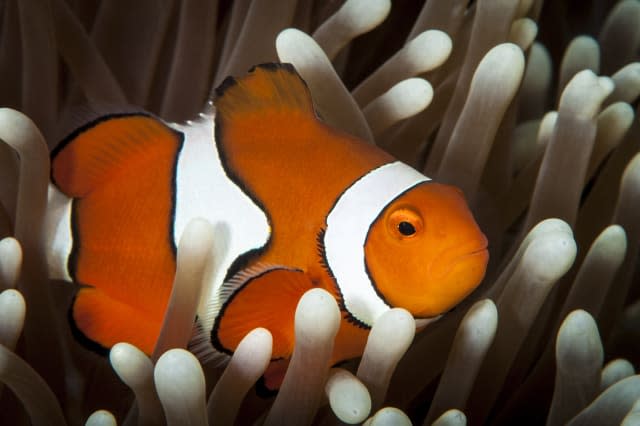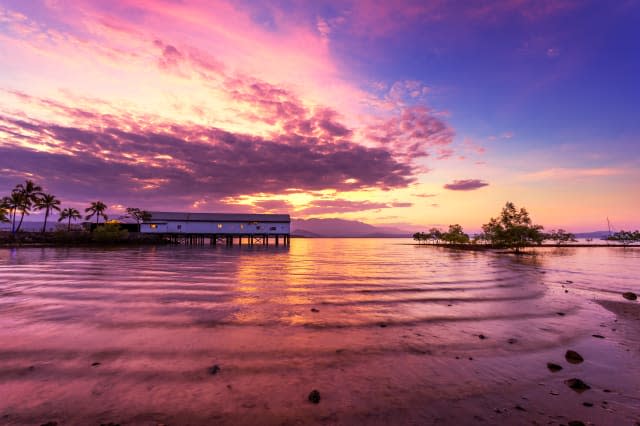A beginner's guide to Australia's Great Barrier Reef

The Great Barrier Reef is one of nature's miracles. No matter how many documentaries you've watched or stories you've heard, nothing compares to seeing the real thing for yourself.
Just off Queensland's pretty shores, it's the largest coral reef system in the world. Its intricate underwater landscapes harbour turtles, manta rays, giant clams, clownfish and hundreds of other marine species, while its islands are rich in life, too – dotted with octopus bushes, pandanus palms and casuarina trees, they're home to crustaceans and thousands of nesting birds. Jump aboard a dive boat, buzz over the turquoise waters by helicopter or simply tuck yourself away in a world-class beach resort, and enjoy.
What's the weather like?
Think tropical, with warm temperatures all year round and plenty of sunshine, especially from April to November. The most visited parts of the Great Barrier Reef span eight degrees of latitude, and temperatures rise the further north you travel. It rarely drops below 20ºC by day; average temperatures peak at well over 30ºC in Far North Queensland during the summer (October to March). The best time to visit is between June and November. The months with the highest rainfall and humidity are December to March.

Is the water warm?
In Far North Queensland, the Coral Sea is a pleasant 22ºC in mid-winter (July and August), rising to 30ºC in midsummer (January and February). At the reef's southern limit off the Gladstone coast, it's usually around 19ºC in winter and 25ºC in summer. To put that in context, the English Channel rarely gets warmer than 18ºC, even in high summer.
Where should I stay – mainland or island?
For a truly varied holiday, consider the popular mainland towns of Port Douglas or Cairns, which are a short hop from the reef by high-speed cruise vessel, or Airlie Beach, the jumping-off point for the Whitsundays. Upbeat and attractive, they cater for all budgets and you'll have everything from concert venues and yoga studios to cafés and farmers' markets on your doorstep.
For something more remote, you can enjoy the peaceful atmosphere of an island campsite, bookable through Queensland National Parks, or the comfort and tranquility of an island resort, which vary in character from fuss-free and family-friendly to utterly luxurious.

I want the best diving that money can buy. Where should I go?
Heron Island, which featured in the BBC's recent natural history documentary series, Great Barrier Reef, narrated by Sir David Attenborough, is a superb choice. Protected since 1943, almost three quarters of Queensland's coral species are found here. Lady Elliot Island, the reef's southernmost coral cay, is also highly recommended; this is a place where conservation takes priority and hundreds of wildlife species congregate.
I'm not a qualified diver – where can I learn?
There are over 50 PADI training centres on the mainland and islands, from Lizard Island in the north to Lady Elliot Island Eco Resort in the south. A PADI Open Water Diver course usually takes four or five days to complete.

I'd love to see the reef but I'm a non-diver. What are the options?
The Whitsunday Islands – well known for sailing – are fantastic for snorkelling, with superb fringing reefs off Langford island. Snorkellers are also welcome on the high-speed catamarans which carry divers to the Outer Reef from Cairns and Port Douglas. There's even an option for wheelchair users: Quicksilver VIII, which is wheelchair-accessible, sails from Port Douglas to Agincourt 3, a floating platform which has a specially designed hydraulic lift with a submersible chair, allowing easy access into the water.
If you'd like to stay dry, head for Green Island and hop aboard a glass-bottomed boat or semi-submersible viewing vessel, or visit Agincourt Reef with Quicksilver to view the reef from their underwater observatory and semi-sub. Gaze through the windows and you could see parrotfish, wrasses or reef sharks cruising calmly through the blue.



